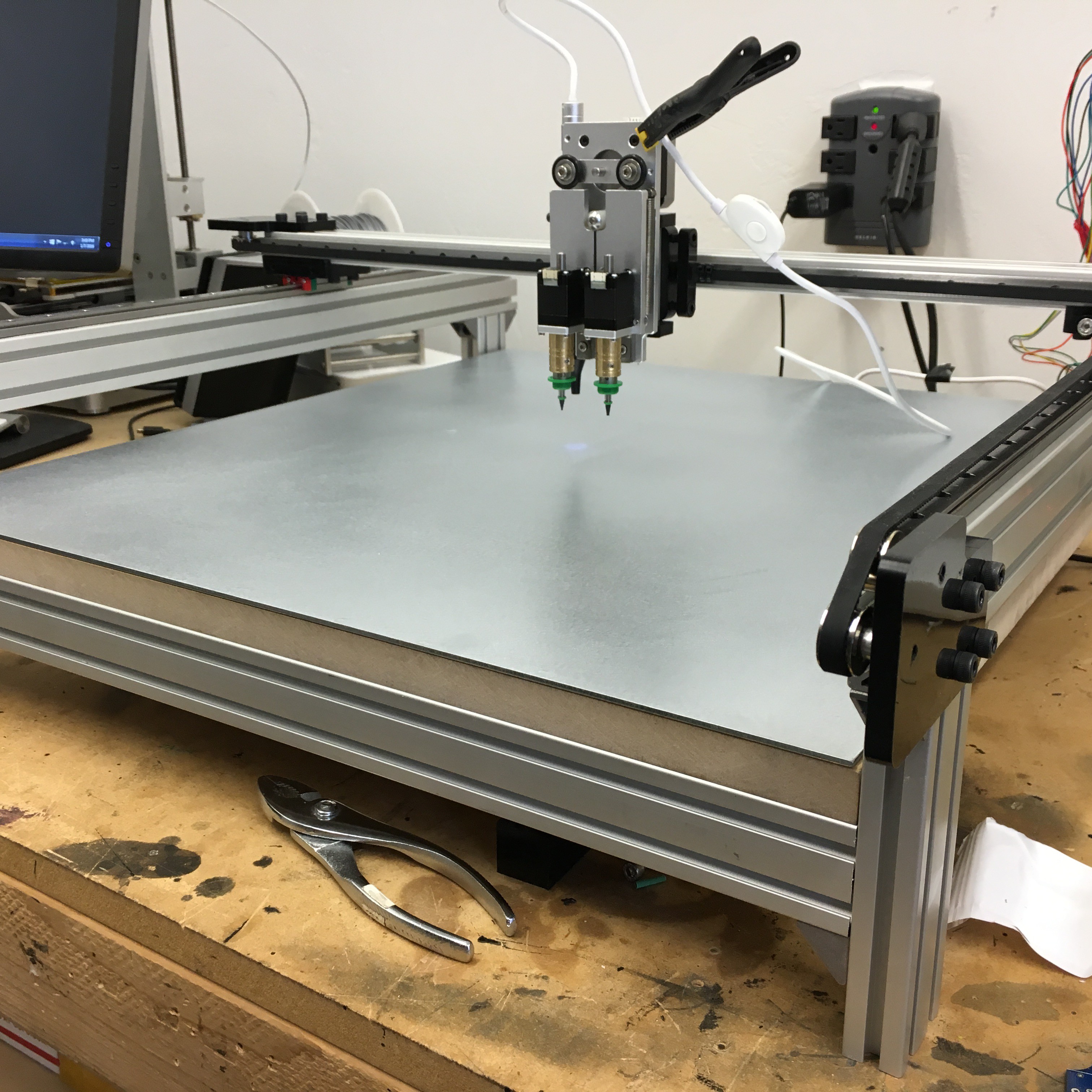1. Principles and practices¶
This week I worked on defining my final project idea and started to getting used to the documentation process. For our lab i tried ordering the Cirquid CNC device for PCB protityping, including milling of traces, applying solder paste and pick and place components. Factory answered that the unit was out of production because the linear encoders aren’t available from the source anymore so they had to stop production. So there the idea was created to work on a CNC Pick and Place machine for electronic components.
I realize its a hard to tackle project as i have to build a XYZ-motion system and handle all the component picking from docking station and accurately place them on the PCB.
Research¶
Upon the preliminary research i stubled upon the list of already available Pick and place units. The main stream of these use OpenPnP as firmware for their systems.
Machines OpenPnP OpenBuilds by OpenPnP – An OpenPnP machine reference design based on OpenBuilds linear motion hardware and 3D printed parts.
DIY Pick and Place by Teton Technology (https://hackaday.io/project/9319-diy-pick-and-place) – An Open Source DIY cartesian PnP machine using Rails / Carriages for high speed and accurate part placement.
Zeva 460 Retrofit by Daniel Dumitru – Documentation on adapting a Zeva 460 Pick and Place to use OpenPnP.
LitePlacer by Juha Kuusama – “The Low Cost Prototype Builder’s Pick and Place Machine”. To use OpenPnP software with LitePlacer hardware, see the wiki page.
QiHe TVM920 Documentation and driver for running the TVM920 with OpenPnP. All of these have their own speciality and accuracy so my challenge is to include some
Video¶
Project Inspiration
Conclusions¶
After reviewing all existing Pick and Place designs available question is what to possible add to the spectrum here. Since most of these systems rely on either expensive linear encoders or sturdy and accurate XYZ systems i will add Optics to the equation. So initial design would be a XYZ motion platform (of potentially crappy quality) and add a camera and optical sensing to improve accuracy of placement of components and potentially QC of the final reflowed PCB. The system will have a component picker revolver and either a laser, infrared or hot air reflower on board. Quality control can potentially be done with color refraction of the solder joints. Good joints reflect color spectrum different from bad ones.
I know its a lot to chew but as i said i dont care about the quality of the motion system itself, i jst want to make a case for improving accuracy by adding optics.
Sketch¶

